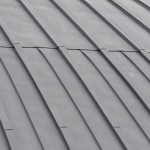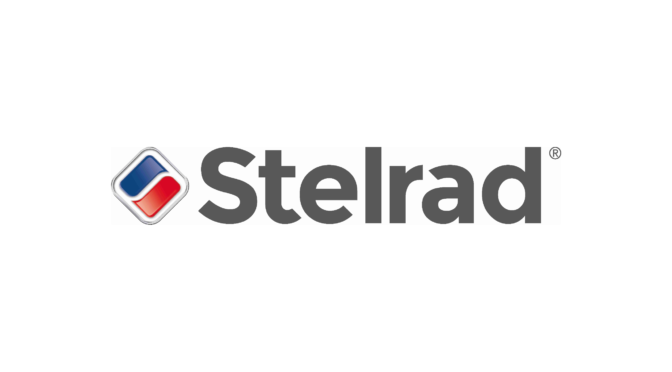Category Archives: Energy
VMZINC roof for Unesco World Heritage site
Story
 As part of Austin Smith Lord’s design for the full renovation of Liverpool Central Library, the original zinc roof of the Picton Reading Room, built in 1879, had to be replaced. 800m2 of VMZINC® QUARTZ-ZINC PLUS® was installed over much of the original Victorian boarding, a combination of batten cap and standing seam panels being used to satisfy English Heritage requirements for the Unesco World Heritage Site. Details were replicated with the help of the VMZINC heritage service in a design which has provided an energy-efficient, sustainable five storey building to replace those built post-war following Second World War bomb damage.
As part of Austin Smith Lord’s design for the full renovation of Liverpool Central Library, the original zinc roof of the Picton Reading Room, built in 1879, had to be replaced. 800m2 of VMZINC® QUARTZ-ZINC PLUS® was installed over much of the original Victorian boarding, a combination of batten cap and standing seam panels being used to satisfy English Heritage requirements for the Unesco World Heritage Site. Details were replicated with the help of the VMZINC heritage service in a design which has provided an energy-efficient, sustainable five storey building to replace those built post-war following Second World War bomb damage.
The roof terrace has been highlighted as ‘star’ of the project, not least because of the spectacular views it provides and the added visual aesthetic it gives of the rotunda roof and the Grade II-listed neo-classical façade.
Click on images to enlarge:
View VM Zinc's profile:
CARDIFF POINTE – BENEFITING FROM A LITTLE MORE STYLE
Story
 Anyone who hasn’t been to Cardiff recently will be pleasantly shocked – particularly if they head towards Penarth and the waterside developments that are springing up around the city. Close to the new International Sports Village which will boast some of the finest sporting venues in the UK when they are completed, you will find Cardiff Pointe – a superb development of homes and apartments, close to the sea, yet just a reasonable stone’s throw from the centre of this revitalised city.
Anyone who hasn’t been to Cardiff recently will be pleasantly shocked – particularly if they head towards Penarth and the waterside developments that are springing up around the city. Close to the new International Sports Village which will boast some of the finest sporting venues in the UK when they are completed, you will find Cardiff Pointe – a superb development of homes and apartments, close to the sea, yet just a reasonable stone’s throw from the centre of this revitalised city.
The first two phases of Cardiff Pointe are being built by Kier Group on behalf of Figurehead Homes and are the result of exciting design work undertaken by the project team on the development – led by Cardiff based architects Scott Brownrigg.
Built to a very high specification, a visit to the showhome close to the marketing suite begins to reveal why this development is already attracting huge interest both as a place to live and a place to invest in. The interiors have been carefully thought through to provide light and airy space with quality fixtures and fittings and a design theme that flows through the whole home with strong sharp lines and edges – through the doors selected to the radiators – the Compact with Style designer radiators from Stelrad. The first two phases at Cardiff Pointe will provide 98 units – a mix of three storey townhouses and apartments – and Stelrad is providing around 700 radiators for these homes alone.
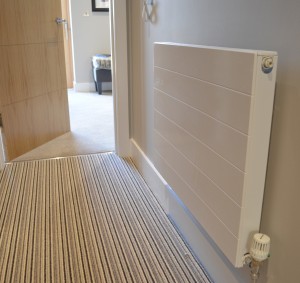 The selection of single panel radiators with a single fin, is an interesting one, design driven – to ensure good looking, slimline radiators that sit close to the walls – but this is also in line with the heating requirements of new homes that are superbly insulated and designed to retain heat particularly in the colder months of the year. The sizes of the radiators in each room also highlight the increased energy efficiency and effectiveness of modern radiators – highlighting the issues with the massive elderly radiators that tend to adorn pre-2000 built properties.
The selection of single panel radiators with a single fin, is an interesting one, design driven – to ensure good looking, slimline radiators that sit close to the walls – but this is also in line with the heating requirements of new homes that are superbly insulated and designed to retain heat particularly in the colder months of the year. The sizes of the radiators in each room also highlight the increased energy efficiency and effectiveness of modern radiators – highlighting the issues with the massive elderly radiators that tend to adorn pre-2000 built properties.
Pre-Construction Manager for Kier Living is Shane Jay: “I was aware of the Stelrad range before we finalised the radiator choice and I knew that they would provide the subtle architectural feel we needed, combined with good value, providing affordable designer styling for any room on the development and I was surprised how easily that decision was agreed to and ratified by the team. Everyone around the table could see that the flat fronted designer radiators with the neat horizontal line would blend perfectly with the lines throughout the homes, in every room.”
Stelrad’s Business Development Manager for the south of Wales is David Last: “When Shane and I were talking about the development, looking at the architectural model of Cardiff Pointe we talked about the need for a higher spec for the radiators than in traditional new build. It was clear this was a special development and needed special treatment and when Shane said ‘This is a job for Compact with Style’ – we both knew this was the answer to one of the challenges the development was setting us….and now we can see them on the walls of the homes that have been built they are exactly right. It was a great choice.”
 Compact with Style is just one of Stelrad’s designer radiator options, that are increasingly being specified by architects and building designers when standard panel radiators do not meet the higher values demanded of top notch developments up and down the country. To see more about Cardiff Pointe, go to www.cardiffpointe.co.uk. For more information on these stylish radiators, simply head for www.stelrad.com – you’ll be surprised how far radiators have come…..
Compact with Style is just one of Stelrad’s designer radiator options, that are increasingly being specified by architects and building designers when standard panel radiators do not meet the higher values demanded of top notch developments up and down the country. To see more about Cardiff Pointe, go to www.cardiffpointe.co.uk. For more information on these stylish radiators, simply head for www.stelrad.com – you’ll be surprised how far radiators have come…..
View Stelrad's profile:
STELRAD RADIATORS WARM EXCEPTIONAL TORQUAY DEVELOPMENT
Story
The brand new Abbey Sands luxury mixed use development has brought a new glow to the Torquay waterfront – but its residents are also glowing – because of some superb energy efficient designer radiators from leading radiator manufacturer Stelrad – selected to share the heat in the new building.

Designed by Kay Elliott Architects for Wiltshire-based developer Havard Estates, Abbey Sands has been built on the site of the former Palm Court Hotel. The development consists of twenty seven apartments, a coffee shop and 3 restaurants. Abbey Sands, is a stunning new 4500m2 luxury mixed usedevelopment on the English Riviera. The six-storey scheme is situated on a prominent waterfront location in central Torquay with views across the bay towards Berry Head. The design is influenced by the art-deco style of the British seaside, and presents a contemporary interpretation of the ‘Riviera style.’ The development is the result of significant commitment from Havard Estates which has recognised and encouraged the potential of this idyllic site and the design potential for maximising on the landmark nature of this exciting new development. Abbey Sands was recently awarded Best Mixed Use Development in the UK for 2014-2015 at the UK Property Awards.
Plymouth-based ECS – Electrical Contracting Services – was the M & E contractor on the project, and through careful negotiations with the main contractor ECS was able to value engineer the project, maintaining the high standards set by the architects throughout the development.
The first and second floors of this prestigious development will accommodate 5 star, luxury self-catering apartments with sea views across Torbay. On the third and fourth floors there are twelve modern, 2 and 3 bedroom apartments whilst on the top floor are two large luxury penthouses with breath-taking views over the bay.
The interiors, which were also designed by Kay Elliott, feature the very best in contemporary interior design. Detail is key which is where the use of designer radiators to provide the heating for the development comes in. Despite its sunny aspect and warmth in the summer months, the south Devon coast can be very cool in the colder months and a first class heating system was always going to be essential.
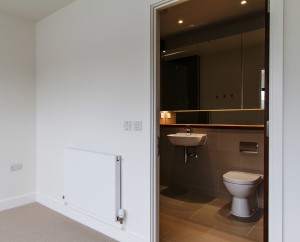
Stelrad’s Planar designer radiator is a stylish, understated, completely flat, smooth fronted, slim profile radiator model, that has won a legion of fans in the interior decorating and architectural sectors. The range includes lengths up to three metres and heights up to 700mm – the largest radiator in the Planar range now delivers 16,726 Btu/hr (Dt50).
Planar is available in five heights – 300mm, 400mm, 500mm, 600mm and 700mm – and multiple length options from 400mm to 3,000mm. It’s available as a single K1 (Type 11) or a double K2 (Type 22) and is now available in an amazing 100 SKUs and 12 vertical options. The Planar vertical range has added significantly to the appeal of this excellent design, allowing it to provide more heat from a narrower radiator footprint, making it a favourite across the UK.
Jan Tribble from architect Kay Elliott says the Planar was the obvious choice for this stunning development: “We pride ourselves on detail and we looked long and hard for the right products to grace Abbey Sands and when we were looking for radiators we wanted something understated, with clean lines and the Planar met those requirements. As well as the aesthetics, we wanted a quality product that offered reliability and quality manufacture – and Stelrad products offer both.”

“We were delighted that the Planar was selected for this project,” says Stelrad’s Marketing Communications Manager, Sarah Baker. “It’s been very popular with architects and interior designers across the UK, looking to add a quality look and feel to a design through the use of a slim profile, flat fronted radiator that blends perfectly into the décor of upmarket apartments, homes and offices. We’re seeing Planar selected increasingly over the use of traditional steel panel radiators to lift new building design to a new level.”
Full details of the Stelrad range of designer radiators can be seen at www.stelrad.com, you can call for brochures and information on 0844 543 6200 or email marketing@stelrad.com . You can follow Stelrad on Twitter @Stelrad or on Facebook at www.facebook.com/StelradLimited.
View Stelrad's profile:
Klober solar accessories for Low Carbon Exchange
Story
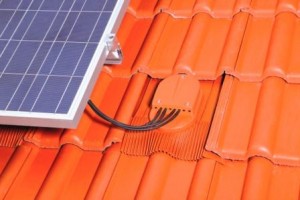 The Low Carbon Exchange is using the Klober Solar Cable Outlet Kit with all new build and retrofit PV installations for the Poole Housing Partnership, Plymouth Community Homes, Alliance Homes, Aster Properties and Radian Housing. 8 and 16 cable kits are available for up to 8 cables of 4mm to 8mm with a choice of 5 collar widths. It provides the ideal means of providing a neat, weathertight seal for cables from other services. The product is fully wind-tunnel tested, available in brown, terracotta and slate grey and suitable for pitches between 20°- 50°.
The Low Carbon Exchange is using the Klober Solar Cable Outlet Kit with all new build and retrofit PV installations for the Poole Housing Partnership, Plymouth Community Homes, Alliance Homes, Aster Properties and Radian Housing. 8 and 16 cable kits are available for up to 8 cables of 4mm to 8mm with a choice of 5 collar widths. It provides the ideal means of providing a neat, weathertight seal for cables from other services. The product is fully wind-tunnel tested, available in brown, terracotta and slate grey and suitable for pitches between 20°- 50°.
Low Carbon Exchange spokesperson Jennie Miller commented, “The Klober kit has provided the perfect means of weatherproofing PV installations and we have used it on all projects since the company was established in 2010.”
View Klober's profile:
CARE HOME BENEFITS FROM LEADING LST RADIATOR RANGE
Story
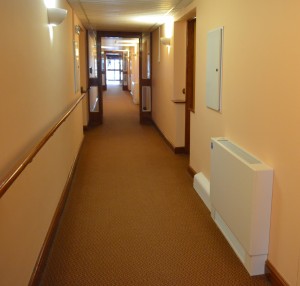 An established care home in Swindon is a warmer and safer place thanks to the specification of Stelrad LST radiators as part of an overall refurbishment project. The Ridings Care Home provides 32 self-contained flats offering a mix of one and two bedroomed accommodation, for a mix of active elderly individuals and couples, some with 24 hour care needs.
An established care home in Swindon is a warmer and safer place thanks to the specification of Stelrad LST radiators as part of an overall refurbishment project. The Ridings Care Home provides 32 self-contained flats offering a mix of one and two bedroomed accommodation, for a mix of active elderly individuals and couples, some with 24 hour care needs.
The care home – one of many owned and managed by The Guinness Partnership – used to feature an ageing electric underfloor heating system with electric immersion heaters providing hot water. As well as being ‘past its sell by date’, it was expensive to run option and needed upgrading and replacing with modern energy efficient and reliable heating options. Hewer FM, based in Gloucester was selected to replace the heating for the care home and the old system was ripped out and replaced by a traditional wet heating system using three modern gas fired condensing boilers to provide the heating source, and two further gas boilers operating in conjunction with solar thermal and solar PV panels to preheat the cylinder and provide hot water.
Because of the differing levels of disability and care requirements in the home, LSTs – low surface temperature radiators – were selected. These comply with the strict requirements of the NHS Guidance Note for ‘Safe hot water and surface temperature’ and can be installed in domestic, commercial and public buildings running heating systems with total public safety assured. 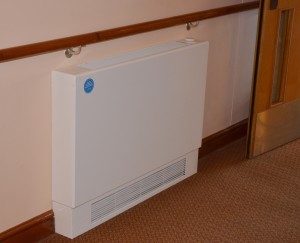 The surface temperature of these LSTs will never exceed 43°C. It’s for buildings such as these that Stelrad’s LST range has been designed, to ensure that elderly and vulnerable people cannot suffer the serious dry burns that are possible from falls against standard radiators where the surface temperatures can exceed 70 degrees Celsius.
The surface temperature of these LSTs will never exceed 43°C. It’s for buildings such as these that Stelrad’s LST range has been designed, to ensure that elderly and vulnerable people cannot suffer the serious dry burns that are possible from falls against standard radiators where the surface temperatures can exceed 70 degrees Celsius.
In all, more than eighty Stelrad LSTi Plus K2 radiators were supplied for this project to heat the flats, the corridors and other public areas of the care home and The Guinness Partnership is very happy with its investment so far: “When you are providing a home for elderly tenants, warmth and safety are the two key features of the property and the Stelrad LSTi’s, as part of this new heating system, offer both perfectly,” says The Guinness Partnership’s Oliver Wilkinson. “As well as being effective and safe, they are aesthetically pleasing and blend in nicely in both the rooms and the wider care home – the covers for the radiators look good and have rounded edges to ensure there are no sharp edges to touch or fall against and have the added benefit of being finished in a long-lasting anti-bacterial coating which is perfect for an environment such as this. The smooth fronted casings are easy to keep clean and hygienic.”
 HewerFM’s John Hendzel was the contract manager responsible for the Ridings project: “The LST i Plus from Stelrad is supplied with the addition of an integral remote sensing thermostatic valve to allow adjustment of room air temperature, making it even more energy efficient than other LST radiators, as well as offering an arthritic adaptor that makes it far easier for older people who may have grip problems to adjust the level of heat in their rooms. There are also additional components to discourage unauthorised tampering for the radiators situated in public areas of the building. Importantly the LST i Plus features curved casing edges which ensures no square edges to damage anyone falling against it. The design has been well thought through and provides an ideal solution for heating in a property such as this one.”
HewerFM’s John Hendzel was the contract manager responsible for the Ridings project: “The LST i Plus from Stelrad is supplied with the addition of an integral remote sensing thermostatic valve to allow adjustment of room air temperature, making it even more energy efficient than other LST radiators, as well as offering an arthritic adaptor that makes it far easier for older people who may have grip problems to adjust the level of heat in their rooms. There are also additional components to discourage unauthorised tampering for the radiators situated in public areas of the building. Importantly the LST i Plus features curved casing edges which ensures no square edges to damage anyone falling against it. The design has been well thought through and provides an ideal solution for heating in a property such as this one.”
Each Stelrad LST emitter provides high outputs through convection for outstanding heat performance and is guaranteed to perform to a maximum working pressure of 116 psi (8 bar) and conform to BE EN 442 – the European standard for radiators.
Full details of the range of Stelrad LSTs can be found at its website at www.stelrad.com.
View Stelrad's profile:
PA Energy use Micronics Ultrasonic, Clamp-On Flow & Heat Meters to monitor and improve water and energy saving projects.
Story

Monitoring the performance of water and energy saving initiatives is essential to demonstrate the benefits, ensuring that systems operate to specification and are tuned for maximum savings to deliver fast pay-back on investments. And London based PA Energy who specialise in the supply, installation and ongoing monitoring of turnkey sub-metering systems have used Micronics ultrasonic, clamp-on flow and heat metering products to good effect on a wide range of water and or energy saving projects.
The projects have included rainwater harvesting, fuel cell and solar/thermal installations on commercial buildings in the London area and the simple clamp-on, non-invasive solutions from Micronics have offered significant advantages over the traditional alternative of in-line meters and their requirement for system drain-down, pipe cutting, re-filling systems and the associated costs, which are all avoided by the use of a clamp-on solution.
For the rainwater harvesting project a claim for a reduction in the sewage charge is being developed by using a Micronics U3000 to demonstrate how much rainwater is being dumped to sewage by metering the amount of water being pumped into a grey water tank in comparison to the boosted cooling water entering the tank. Another application was measuring the LTHW heat flow from a fuel cell calorifier again with a U3000 to demonstrate the performance of the fuel cell process. And yet another was monitoring the heat transfer/performance from a solar/thermal panel by measuring the water /glycol mix and differential flow and return temperature with a heat calculator to calculate heat transfer to the buffer vessel heat exchanger to demonstrate the performance of the solar/thermal system i.e. that it was performing to specification.
PA Energy selected clamp-on ultrasonic flow meters for the clear advantages of being low cost, non disruptive and simple to install in comparison to in-line meters and Micronics were selected as the supplier due to a combination of their long-term experience with non-invasive, clamp-on technology, product performance and pre-order assistance.
PA’s Managing Director – Percy Albuquerque says “The Micronics clamp-on flow meters have proved to be an effective component in providing accurate water flow and heat measurement data for our web based aM&T plus data analysis services. The product performance has been good, even on partially filled pipes and on the rare occasions that we have had application problems the Micronics support has been good.”
The potential for similar use is significant and PA’s experience is an example of how clamp-on, ultrasonic technology can be successfully implemented to gather information and demonstrate the performance of water and energy saving installations. For further information call +44(0)1628 810456, or visit www.micronicsflowmeters.com.
View Micronics's profile:
Heat Recovery put to Good Use
Story
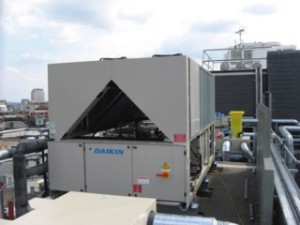 In HVAC system terms, heat recovery is a process of capturing, and putting to good use, heat that would, in the normal course of events, be “rejected to atmosphere”. One example is heat energy that is absorbed and rejected by an air conditioning system during its cooling cycle. This, to all intents and purposes, is free heat that can be successfully redirected for space heating, domestic water heating or any other process that requires heat.
In HVAC system terms, heat recovery is a process of capturing, and putting to good use, heat that would, in the normal course of events, be “rejected to atmosphere”. One example is heat energy that is absorbed and rejected by an air conditioning system during its cooling cycle. This, to all intents and purposes, is free heat that can be successfully redirected for space heating, domestic water heating or any other process that requires heat.
Heat recovery is being successfully applied in all types of buildings, schools, manufacturing plants and office buildings. It typically provides a very attractive return on investment for building owner/operators.
Hotels with their relatively high year-round internal cooling loads combined with high hot water demand are excellent opportunities for “green” heat pump, heat recovery chiller technology.
Importantly, heat pump heat recovery systems can allow for substantially downsizing or even eliminating fossil fuel, combustion based heating equipment such as gas boilers. This was the case in a project undertaken and described here by the Daikin Distributor, Space Airconditioning plc.
Space Air has enjoyed a partnering agreement with a leading UK hotel group for over 20 years and, for a refurbishment project in the heart of London, supplied a 320kW Daikin air-cooled chiller with a heat recovery option. In addition to satisfying specific, almost continuous cooling demands, this chiller also provides warmed water to 4 x 500 litre indirect DHW cylinders.
The hotel’s hot water supply is pre-heated by the chiller’s heat recovery process; this in turn dramatically reduces the output required of new high efficiency gas fired water boilers.
The result is significant kW savings in energy and huge reductions in mains gas consumption.
The Hotel Group had committed to refurbish the Covent Garden Hotel including all guest bedrooms as well as function rooms, reception areas and restaurants.
Space Air technicians in conjunction carried out a survey with the hotel’s maintenance company. It was determined that whilst the existing Air Handling Unit serving the common areas and restaurants etc. was in good condition and could be re used, an existing air cooled chiller needed replacing, due to the fact that it was designed to operate with R22 refrigerant (the use of which for service purposes will be banned from 2015) and was in a state of disrepair with only one working compressor circuit.
The concept that a new Daikin Chiller to replace the old machine, could also provide cost effective heat recovery features, created interest because the hotel’s existing gas boilers were due to be replaced.
Space Air presented the features and specification of the Daikin Heat Recovery system to the client. Space Air was able to illustrate cost savings the Heat Recovery option would provide, and combined with the reduced costs for the smaller gas boilers, substantial reductions in the hotel’s hot water services operational costs could be realised.
The Hotel group decided it made good financial sense to proceed with the Heat Recovery option.
The new Daikin heat recovery chiller operates 24/7 and an existing back up (cooling only) Daikin chiller is only used in case of unlikely
failure. This means the new chiller provides virtually continuous pre-heated water for the DHWS.
On a seasonal basis it has been calculated that the chiller will produce an average of 236.6kW of hot water, free of charge. This takes into account the chiller operating for 24 hours, 7 days a week, 365 day a year (8760 hours).
Four x 500 Litre indirect cylinders provide pre-heated water on a separate circuit to the secondary heat exchanger in the basement, which serves the main feed to the showers, and DHWS for the hotel guestrooms.
Allowing for losses in the cylinders and pipework etc., the system achieves delta T of approximately 20°C. So the mains water supply to the DHWS heat exchanger is increased by this temperature rise resulting in a much lower demand than usual on the new gas boilers.
To put this into perspective the cost to heat 2000L of water based on a ∆T of 20°C with a gas boiler was calculated and compared with the ‘extra’ cost of providing a heat recovery option on the chiller price to perform the same function.
Approx. 46.44kWh (per hour) of energy is required. Over one year based on 24/7, 365 days (8760 hours) operation and with gas at 4p per kWh, the cost of gas would be approx. £16k.
The premium cost for the optional HR circuit on the Daikin Chiller plus the required tanks, pumps, pipework etc. Installed = £30/40k (Estimated). This equates to a payback period on the investment of less than 3 years.
So far the client is delighted with the cost savings achieved and is looking to apply similar heat recovery principles in more of his property portfolio.
View Space Air's profile:
FAKRO roof windows and solar panels for architect’s self-build
Story
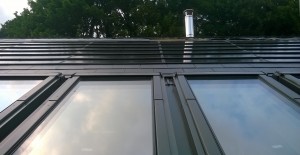
FAKRO FTT U6 triple-glazed roof windows have been used in combination with in-roof solar thermal panels of the same size in a self-build within Bath’s Central Conservation Area. Head of Sustainable Design at Architects Stride Treglown, Rob Delius installed 6 FAKRO roof windows and 6 FAKRO solar thermal panels using B12/1 horizontal combination flashings on the south aspect. Airtightness was key to the highly sustainable design and with an installed U-value of 0.81W/m2K the FAKRO FTT U6 performance surpasses Passivhaus requirements.
The building, which utilises passive stack ventilation, also has a rainwater harvesting system, green roof area, PV tiles and sheepswool insulation.
View Fakro's profile:
SAINT-GOBAIN PAM UK – THE ‘NATURAL’ CHOICE FOR WESSEX WATER
Story
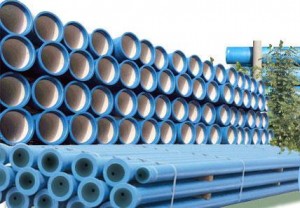 Saint-Gobain PAM UK has been awarded a major contract to supply more than 70km of its EN545 approved Natural ductile iron pipe range for a flagship project for Wessex Water.
Saint-Gobain PAM UK has been awarded a major contract to supply more than 70km of its EN545 approved Natural ductile iron pipe range for a flagship project for Wessex Water.
The water company is constructing a number of schemes as part of its water supply grid project to help meet future demand without developing new sources. The project will allow Wessex Water to improve the security of supply for customers – even in the event of a catastrophic failure – and meet reductions in abstraction licences required by the Environment Agency to improve flows in some rivers and protect their ecology. It will also help deal with seasonal or occasional deteriorating raw water quality – particularly increasing concentrations of nitrates at some groundwater sources – as well as meeting future water supply demands. It includes the construction of a new water main to transfer water from the south of Wessex Water’s region, in Dorset, to Salisbury in Wiltshire via Blandford and Shaftesbury.
Due for completion by 2018, much of the pipeline route passes through the Cranborne Chase and West Wiltshire Area of Outstanding Natural Beauty and has been designed to avoid environmentally sensitive areas.
The first order will see around 17km of DN350 pipe supplied for a twin main section between Sturminster Marshall and Snowsdown.
Wessex Water held a number of initial consultations with Saint-Gobain PAM UK to discuss the options for pipe materials. Ductile iron was ultimately selected by Wessex Water for the majority of the project for its strength. The design was able to achieve a bed and haunch to support the pipe, which has reduced the import and export of materials, lowering the impact on the environment. Ductile iron pipes also offer installation flexibility, with multiple pipes in a single trench, as well as a relatively short and discreet installation period, meaning trenches do not need to be left open for extended periods. With the native soils being primarily chalk, the ability to rapidly backfill trenches quickly is key, as chalk left at a trench side for long periods could be exposed to the effects of heavy rainfall, making it more difficult to reinstate.
The Natural range, available in diameters from DN350DN to DN600DN, offers strong corrosion resistance in soils with resistivity as low as 500ohm cm through its 400grm Zinc Aluminium alloy protection. The protective coating also eliminates the need to identify transition points between medium and low resistivity soils, where alternative systems may require a change from standard to supplementary protection.
Simon Cottingham, Director of Key Accounts and Major Projects at Saint-Gobain PAM UK, commented: “We worked closely with the Wessex Water team to define the scope of the project and recommend a solution which would allow the customer to benefit fully from the performance attributes offered by ductile iron pipes. We are very proud of taking part in this project and contributing to its success.”
Davin Eversett, Project Manager at Wessex Water commented: “Wessex Water’s project management team in conjunction with the internal design and procurement teams have worked with Saint-Gobain PAM UK in the development of this pipeline and concluded that ductile iron pipes will offer the lowest whole life cost as well as the flexibility to deliver what will be a challenging construction programme.”
Visit www.saint-gobain-pam.co.uk for more information on the products and services offered by Saint-Gobain PAM UK.
View PAM Building's profile:
Clamp-on with Micronics for major installation savings, minimal downtime and dry servicing.
Story
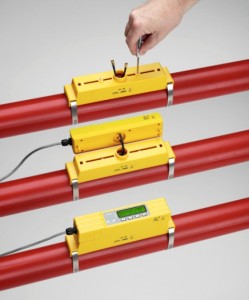 The U3000 & U1000 latest generation of clamp-on, ultrasonic flow meters from Micronics are a viable alternative to in-line meters for HVAC metering, in both retrofit and new build applications, delivering major installation savings, minimal downtime, maximised availability and significant maintenance benefits.
The U3000 & U1000 latest generation of clamp-on, ultrasonic flow meters from Micronics are a viable alternative to in-line meters for HVAC metering, in both retrofit and new build applications, delivering major installation savings, minimal downtime, maximised availability and significant maintenance benefits.
Liquid flow metering including LTHW, Chilled water and DHWS plus flow measurement for Thermal Energy measurement are all areas where clamp-on meters offer a best value solution for Building Services or Energy Management i.e. they will be significantly cheaper to install than traditional in-line meters and as they’re non-invasive they deliver maximum availability through dry servicing and minimal maintenance.
The larger the pipe size the greater the installed saving will be but with the elimination of flanges and by-pass valves significant savings are available for a wide range of pipe sizes with major savings for larger applications! The following is a comparison of new build installation costs the comparable savings for retrofit would be higher:
| Pipe Size mm – Steel Pipe | 25 | 40 | 50 | 65 | 80 | 125 | 150 |
| Total cost of installing insertion meters with maintenance bypass | £468 | £601 | £704 | £1,681 | £1,992 | £3,873 | £4,840 |
| Cost of installing clamp on ultrasonic meter, half hour labour up to 50mm, 1 hour labour from 50mm | £6.20 | £6.20 | £6.20 | £12.40 | £12.40 | £12.40 | £12.40 |
| Additional cost of insertion meter installation i.e. POTENTIAL SAVINGS – wiring assumed to be equal: | £462 | £595 | £697 | £1,669 | £1,980 | £3,860 | £4,828 |
| Insulation of clamp on and insertion meters assumed to be similar |
| Costs from Spons M&E It’s appreciated that competitive tendering would reduce these cost estimates. |
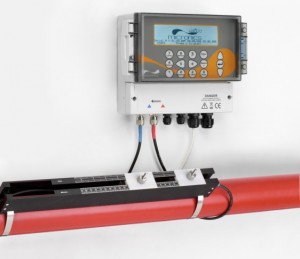 The above demonstrates the potential installation price savings from using a clamp-on solution, which would deliver an installed clamp-on meter price with savings ranging from significant to major from 50mm upwards. And with the added benefits of being non-invasive, requiring only dry servicing and maximising availability. Call+44 (0) 1628 810456 or visit www.micronicsflowmeters.com for further info.
The above demonstrates the potential installation price savings from using a clamp-on solution, which would deliver an installed clamp-on meter price with savings ranging from significant to major from 50mm upwards. And with the added benefits of being non-invasive, requiring only dry servicing and maximising availability. Call+44 (0) 1628 810456 or visit www.micronicsflowmeters.com for further info.
